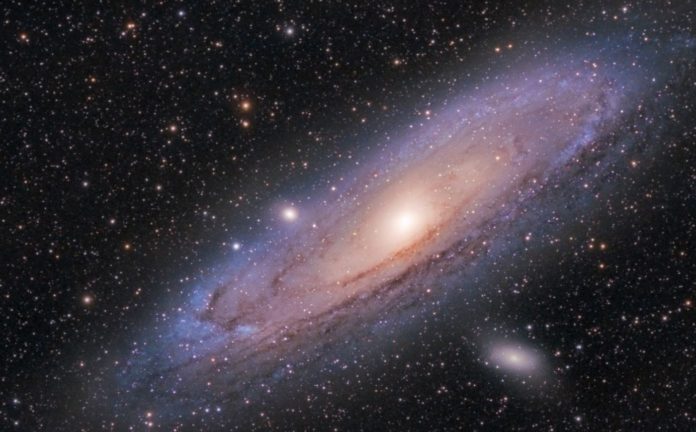Astrophysicists say that the results of a new study could change how we think about a lot of astronomical things, such as how black holes form, why supernovae happen, and why galaxies die.
The appearance of stars in faraway galaxies has been a mystery for as long as people have studied the cosmos. A team of researchers from the Niels Bohr Institute at the University of Copenhagen has debunked prior theories about stars beyond our galaxy in a paper published today in The Astrophysical Journal.
Since 1955, it has been presumed that the composition of stars in other galaxies in the universe is comparable to that of our own galaxy’s hundreds of billions of stars — a mix of massive, medium mass, and low mass stars.
However, with the aid of measurements from 140,000 galaxies across the universe and a variety of advanced models, the researchers examined whether the Milky Way’s apparent distribution of stars holds true elsewhere.
Nope.
Stars in faraway galaxies are often more massive than those in our close vicinity. The discovery has a significant impact on our understanding of the cosmos.
“The mass of stars tells us astronomers a lot. If you change mass, you also change the number of supernovae and black holes that arise out of massive stars. As such, our result means that we’ll have to revise many of the things we once presumed, because distant galaxies look quite different from our own,” Albert Sneppen, a Niels Bohr Institute graduate student and the study’s first author, says.
Light from 140.000 galaxies was analyzed
For more than fifty years, scientists assumed that the size and mass of stars in other galaxies were identical to our own for the simple reason that they could not observe them through a telescope, as they did with stars in our own galaxy.
Countless billions of light-years separate distant galaxies. As a result, only the brightest stars’ light ever reaches Earth. This has been a source of consternation for astronomers around the world for years, as they have never been able to pinpoint how stars in other galaxies are dispersed, leaving them to believe that they are distributed similarly to the stars in our Milky Way.
“We’ve only been able to see the tip of the iceberg and known for a long time that expecting other galaxies to look like our own was not a particularly good assumption to make. However, no one has ever been able to prove that other galaxies form different populations of stars. This study has allowed us to do just that, which may open the door for a deeper understanding of galaxy formation and evolution,” Associate Professor Charles Steinhardt, one of the study’s co-authors, agrees.
The researchers used the COSMOS catalog, a massive international collection of more than one million observations of light from other galaxies, to analyze light from 140,000 galaxies. These galaxies can be found everywhere in the universe, from the nearest to the distant regions, where light has traveled a total of twelve billion years before reaching Earth.
Massive galaxies are the first to die
The researchers say that the new finding will have a wide range of effects. Why galaxies die and stop generating new stars, for example, is still a mystery. According to the current findings, this might be explained by a simple trend.
“Now that we are better able to decode the mass of stars, we can see a new pattern; the least massive galaxies continue to form stars, while the more massive galaxies stop birthing new stars. This suggests a remarkably universal trend in the death of galaxies,” Albert Sneppen comes to a conclusion.
The study was carried out at the Cosmic Dawn Center (DAWN), a Danish National Research Foundation-funded international astronomy fundamental research center. The Niels Bohr Institute at the University of Copenhagen and DTU Space at the Technical University of Denmark collaborated on DAWN.
Through observations with the greatest telescopes, as well as theoretical study and simulations, the center is dedicated to understanding when and how the first galaxies, stars, and black holes formed and evolved in the early universe.
Image Credit: Getty
You were reading: Stars In Distant Galaxies Are More Massive Than We Thought – New Research Says
